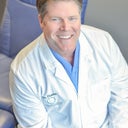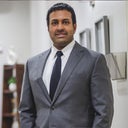Posted underTummy Tuck q&a
How Can a Physician Tell the Difference Between Fat and Loose Skin for a Tummy Tuck?
Answers (13)
From board-certified doctors and trusted medical professionals
Dr. Martin Jugenburg, MD

Dr. Martin Jugenburg, MD
Certified Plastic Surgeon
Answer
Dr. Richard J. Bruneteau, MD

Dr. Richard J. Bruneteau, MD
Board Certified Plastic Surgeon
Answer
Dr. Francis X. Fleming, MD

Dr. Francis X. Fleming, MD
Board Certified Plastic Surgeon
Answer
Dr. Vishnu Rumalla, MD

Dr. Vishnu Rumalla, MD
Board Certified Plastic Surgeon
Answer
Dr. Lee H. Colony, MD, FACS
Dr. Lee H. Colony, MD, FACS
Board Certified Plastic Surgeon
Answer
Dr. Kris M. Reddy, MD, FACS
Dr. Kris M. Reddy, MD, FACS
Board Certified Plastic Surgeon
Answer
Dr. Jeffrey Zwiren, MD
Dr. Jeffrey Zwiren, MD
Board Certified Plastic Surgeon
Answer
Dr. Robert K. Sigal, MD
Dr. Robert K. Sigal, MD
Board Certified Plastic Surgeon
Answer
Dr. Shahin Javaheri, MD
Dr. Shahin Javaheri, MD
Board Certified Plastic Surgeon
Answer
More Tummy Tuck Questions
See all Tummy Tuck Q&AWE SEND PRETTY
EMAILS
What’s trending? Who’s turning heads? Which TikTok myths need busting? We’ve got you. No fluff, no gatekeeping—just real talk. Get our free, unfiltered newsletter.

